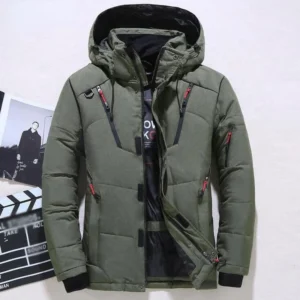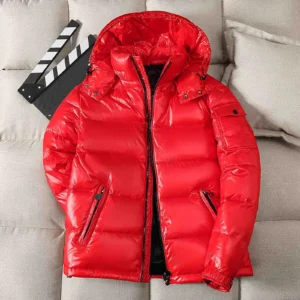Introduction: Why Layering Under a Cashmere Overcoat Matters
The cashmere overcoat stands as the pinnacle of luxury outerwear, combining timeless elegance with unmatched comfort. This premium garment deserves thoughtful consideration when it comes to what you wear underneath. Proper layering isn’t just about staying warm—it’s about maintaining the sophisticated silhouette that makes your overcoat so appealing in the first place.
Strategic layering offers three key benefits:
– Optimized insulation that keeps you warmer than a single thick layer
– Preserved elegance that maintains your overcoat’s clean lines and drape
– Versatility to adapt to changing temperatures throughout the day
The secret lies in combining thin, high-quality layers rather than relying on bulky single items. This approach ensures both comfort and sophistication, allowing your cashmere overcoat to look as good as it feels.
Throughout this guide, we’ll explore essential layering principles, smart fabric choices, and versatile combinations that work with your lifestyle and the perfect cashmere overcoat for your needs.
The Science of Layering: Creating Warmth Without Bulk
Understanding the science behind effective layering helps you make smarter wardrobe choices. The key concept is simple yet powerful: air trapped between thin layers provides far better insulation than one thick layer alone.
When you layer strategically, you create:
– Multiple microclimate zones that regulate body temperature
– Enhanced moisture management as perspiration can move away from the skin
– A versatile system that adapts to changing conditions
The three-layer system forms the foundation of effective cold-weather dressing:
– Base layer: Manages moisture and provides initial warmth
– Mid-layer: Delivers primary insulation and style
– Outer layer: Your cashmere overcoat provides wind protection and elegance
This approach allows you to adapt throughout the day by adding or removing layers as needed. The unique properties of 100 percent cashmere coats make them ideal outer layers, as they provide excellent warmth without the heaviness of other materials.
Core Principles for Effective Layering Under Cashmere
Follow these essential guidelines to achieve perfect layering under your overcoat:
The thin-to-thick rule: Always start with your thinnest layers closest to the body, gradually increasing thickness as you move outward. This optimizes both warmth and comfort.
Prioritize proper fit: Each layer should fit comfortably without excess fabric that bunches. Too-loose base or mid-layers create unsightly lumps under your coat.
Select materials thoughtfully: Choose fabrics based on breathability, insulation properties, and weight. Natural fibers often outperform synthetics under luxury outerwear.
Limit visible layers: Aim for no more than three visible layers to maintain elegance. More layers can appear cluttered and compromise your silhouette.
Ensure versatility: Each layer should look good on its own if you need to remove your coat indoors.
Coordinate colors intentionally: Use complementary or tonal color schemes for a sophisticated appearance.
Maintain clean lines: Select layers that preserve the tailored shape of your overcoat without distorting its silhouette.
These principles ensure your layered outfit remains refined while providing exceptional comfort. The fit and comfort of your cashmere overcoat should remain uncompromised even with multiple layers beneath.
Base Layer Essentials: Your First Defense Against Cold
The base layer sits directly against your skin, serving two critical functions: wicking away moisture and providing initial thermal protection. Getting this foundational piece right sets you up for layering success.
Best materials for base layers include:
– Merino wool: Naturally temperature-regulating, odor-resistant, and incredibly soft
– Silk: Lightweight, smooth, and surprisingly warm for its thin profile
– Technical fabrics: Engineered to manage moisture while maintaining a slim profile
For optimal comfort, your base layer should fit snug but not restrictive—think of it as a second skin. This close fit maximizes warming efficiency while minimizing bulk.
Base layer weight should correspond to anticipated temperatures:
– Lightweight (150g/m²) for mild cold or active movement
– Midweight (200g/m²) for moderate cold
– Heavyweight (250+g/m²) for severe cold conditions
Consider neckline compatibility with your other layers—crew necks work well with dress shirts, while turtlenecks can eliminate the need for scarves. Color selection matters too, as base layers may become visible when removing outer layers.
The principles of layering apply across different outerwear types—techniques from winter wool car coat layering often transfer well to cashmere overcoats.
Mid-Layer Mastery: Insulation Without Volume
The mid-layer provides your primary insulation while contributing significantly to your style. This layer must balance warmth with minimal bulk to ensure your overcoat still fits properly.
Optimal mid-layer fabrics include:
– Fine-gauge cashmere sweaters (particularly in crew or V-neck styles)
– Merino wool cardigans or pullovers
– Thin down or synthetic vests for core warmth
– Lightweight wool blazers or sport coats
For formal occasions, consider these mid-layer options:
– Fine merino or cashmere sweater vest under a suit jacket
– Tailored waistcoat that complements your trousers
– Lightweight wool blazer in a complementary color
For more casual settings:
– Quarter-zip fine merino pullover
– Lightweight cardigan in a contrasting texture
– Thin quilted vest that adds warmth without arm bulk
To avoid mid-layer bunching:
– Choose tailored pieces with minimal excess fabric
– Opt for shorter cuts that won’t extend below your overcoat
– Select smooth fabrics that won’t catch on your other layers
The right mid-layer significantly impacts how you style your men’s cashmere overcoat, transforming it from merely warm to truly exceptional.
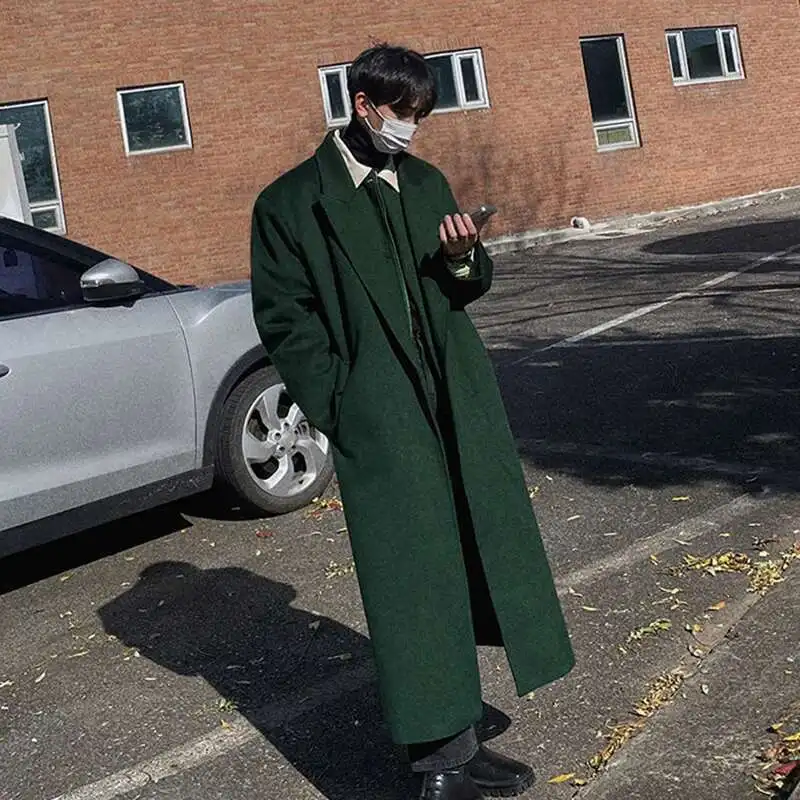
Formal Layering: Sophisticated Combinations for Business and Events
Formal settings demand refined layering that preserves the elegant lines of your cashmere overcoat while ensuring appropriate warmth. The key is selecting thin, high-quality pieces that work harmoniously.
For business or formal events, consider these sophisticated combinations:
- Fine merino turtleneck under a tailored suit jacket
- Dress shirt with a thin cashmere V-neck sweater
- Dress shirt, tie, and tailored waistcoat
- Silk-blend base layer under a dress shirt and blazer
Texture coordination becomes especially important in formal layering—consider mixing subtle textures like fine wool with silk or cashmere for visual depth without appearing busy. A tonal color palette (variations within the same color family) creates a sophisticated appearance that works perfectly with the refined nature of cashmere.
When using a suit jacket or blazer as a mid-layer, ensure it’s cut slim enough to fit comfortably under your overcoat without creating shoulder distortion. The jacket should be slightly shorter than your overcoat to maintain proper proportions.
For the most formal occasions, a properly fitted suit worn under a complementary dress coat creates an unmatched elegant appearance.
Casual and Business-Casual Layering Approaches
Your cashmere overcoat isn’t limited to formal settings—it can elevate casual outfits while still providing exceptional warmth. Casual layering allows more creative expression while maintaining the coat’s inherent elegance.
For business-casual environments:
– Fine-gauge turtleneck with a soft-shouldered blazer
– Dress shirt with a lightweight quarter-zip sweater
– Thin flannel shirt with a casual unstructured jacket
– Merino polo under a lightweight cardigan
For weekend or purely casual settings:
– Fine cotton henley with a shawl-collar cardigan
– Lightweight chambray shirt with a cashmere crew neck
– Merino t-shirt layered under a casual button-down and light sweater
– Thin mock-neck sweater with an unstructured sport coat
The beauty of casual layering lies in thoughtful color and texture combinations. While formal layering often relies on subtle variations, casual pairings can incorporate more contrast—a light blue oxford cloth shirt under a navy textured sweater creates pleasing visual interest.
The principles for styling a double-breasted coat apply similarly to single-breasted cashmere overcoats, with attention to proportion and balance being key.
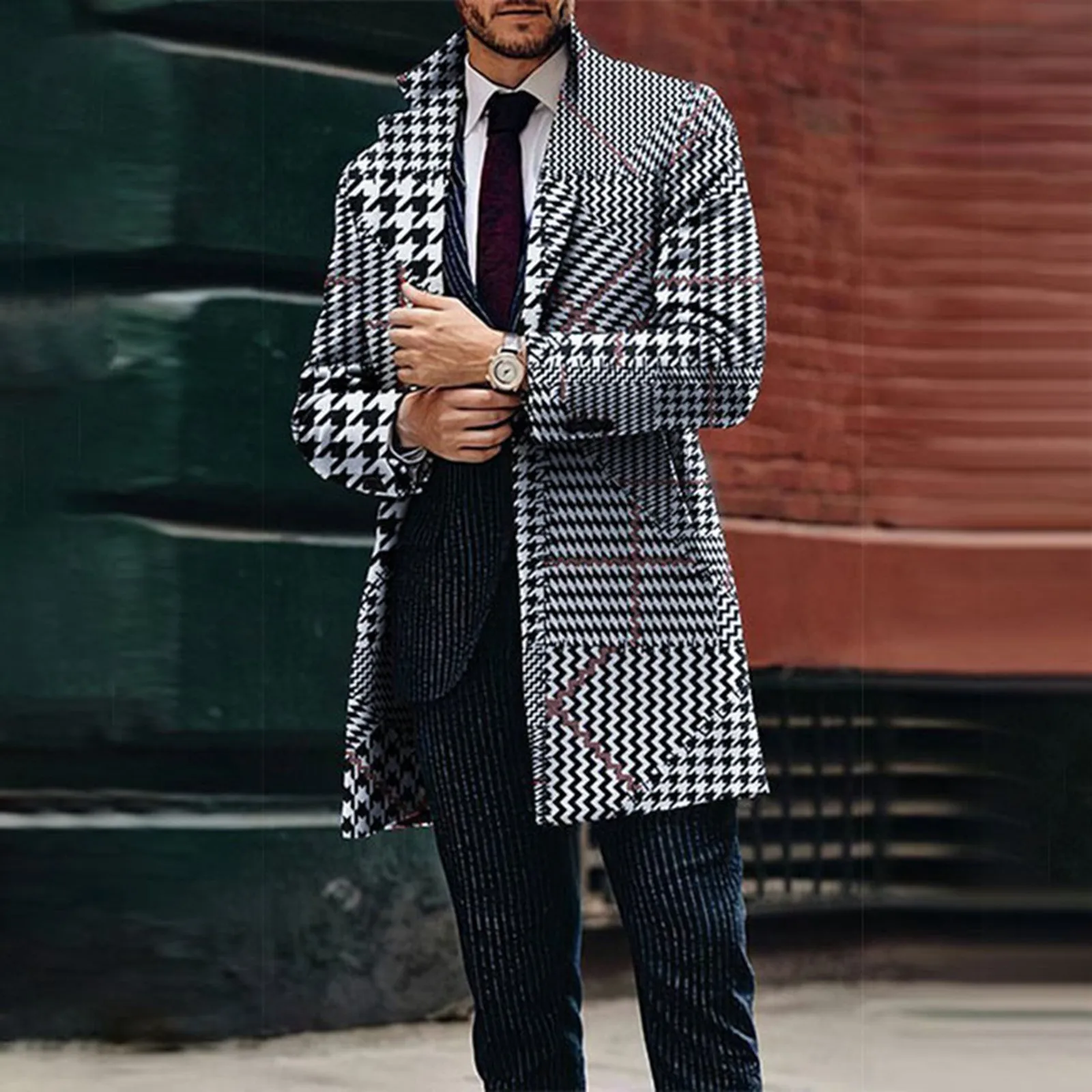
Strategic Fabric Selection for Different Temperature Ranges
Adapting your layers to specific temperature ranges ensures optimal comfort without overheating or feeling cold. Here’s a practical guide for different conditions:
Mild Cold (45-60°F / 7-15°C)
– Base layer: Lightweight silk or thin merino (150g)
– Mid-layer: Single light sweater or unstructured blazer
– Accessories: Light scarf optional
Moderate Cold (32-45°F / 0-7°C)
– Base layer: Midweight merino (180-200g)
– Mid-layer: Cashmere sweater or lightweight jacket/blazer
– Accessories: Medium-weight scarf, light gloves
Severe Cold (Below 32°F / 0°C)
– Base layer: Heavyweight merino (250g+)
– Mid-layer: Combination of thin sweater and jacket or vest
– Accessories: Thick cashmere scarf, lined gloves, hat
Additional factors to consider include:
– Wind chill (increase layer weight or add a windproof vest)
– Humidity (damp cold feels colder—add additional insulation)
– Activity level (reduce layers if walking long distances)
For transitional seasons like early fall or late spring, focus on easily removable layers that allow quick adaptation to temperature fluctuations throughout the day.
Proper layering makes winter coats significantly more effective at lower temperatures, extending their usable range well into colder conditions.
Accessorizing Your Layers: The Final Touch of Warmth and Style
Accessories serve dual purposes when layering under a cashmere overcoat—they enhance warmth at vulnerable points while adding personality to your ensemble.
Scarves
– Materials: Cashmere, fine wool, or silk-wool blends complement overcoats perfectly
– Styling: For maximum warmth, the European loop provides neck coverage without bulk
– Colors: Consider both complementary and contrasting options depending on your outfit
Gloves
– Materials: Leather (often lined with cashmere or wool) for formal settings
– Fit: Should be snug enough to maintain dexterity without restricting movement
– Features: Touchscreen compatibility adds practicality without sacrificing elegance
Hats
– Formal options: Classic wool felt fedoras or cashmere watch caps
– Casual options: Textured beanies or flat caps in complementary colors
– Consideration: Hat should balance your face shape and overcoat proportions
Socks
– Materials: Merino wool or wool-silk blends provide warmth without bulk
– Height: Over-the-calf socks prevent cold ankles when sitting
– Weight: Match sock weight to shoe type and expected temperatures
These finishing touches complete your layering system while allowing personal expression within the refined framework of your wool overcoat.
Mens Heavy Winter Coat, Mens Insulated Coat, Mens Parka Coat
Price range: $175.52 through $237.36 Select options This product has multiple variants. The options may be chosen on the product pageMens Big and Tall Winter Coats, Mens Down Coat, Mens Hooded Winter Coat, Mens Puffer Coat
Price range: $126.44 through $217.01 Select options This product has multiple variants. The options may be chosen on the product pageMens Big and Tall Winter Coats, Mens Hooded Winter Coat
Price range: $80.32 through $106.68 Select options This product has multiple variants. The options may be chosen on the product pageMens Cashmere Overcoat, Mens Hooded Winter Coat, Mens Wool Blend Coat
Price range: $128.72 through $139.68 Select options This product has multiple variants. The options may be chosen on the product pageMens Hooded Winter Coat, Mens Insulated Coat, Mens Puffer Coat, Mens Quilted Coat
Price range: $139.88 through $177.72 Select options This product has multiple variants. The options may be chosen on the product pageMens Black Overcoat, Mens Black Wool Coat, Mens Wool Overcoat
$339.18 Select options This product has multiple variants. The options may be chosen on the product page
Common Layering Mistakes to Avoid
Even with quality garments, certain layering missteps can compromise both comfort and appearance. Here are pitfalls to avoid:
Excessive bulk: Too many layers or overly thick individual pieces distort your overcoat’s shape. Choose quality over quantity—one fine cashmere sweater often outperforms multiple cheap layers.
Poor moisture management: Non-breathable synthetic base layers trap perspiration, leaving you damp and eventually cold. Invest in natural fibers or premium technical materials designed for moisture wicking.
Neckline disharmony: Conflicting necklines create visual confusion and comfort issues. Ensure your shirt collar, sweater neckline, and coat lapels work together harmoniously.
Improper length relationships: Mid-layers that extend beyond your overcoat create an unbalanced appearance. Each layer should be slightly shorter than the one covering it.
Clashing patterns or colors: Overly busy combinations distract from the elegant simplicity of a fine overcoat. Limit patterns to one layer and ensure colors complement rather than compete.
Compromising mobility: Overly tight layers restrict movement and create stress points in your garments. Ensure you can comfortably move your arms without restriction.
Ignoring adjustability: The inability to add or remove layers throughout the day leads to discomfort as conditions change. Plan your layering system with adaptability in mind.
Understanding these common mistakes helps you avoid them, ensuring your cashmere overcoat investment continues to deliver both comfort and style.
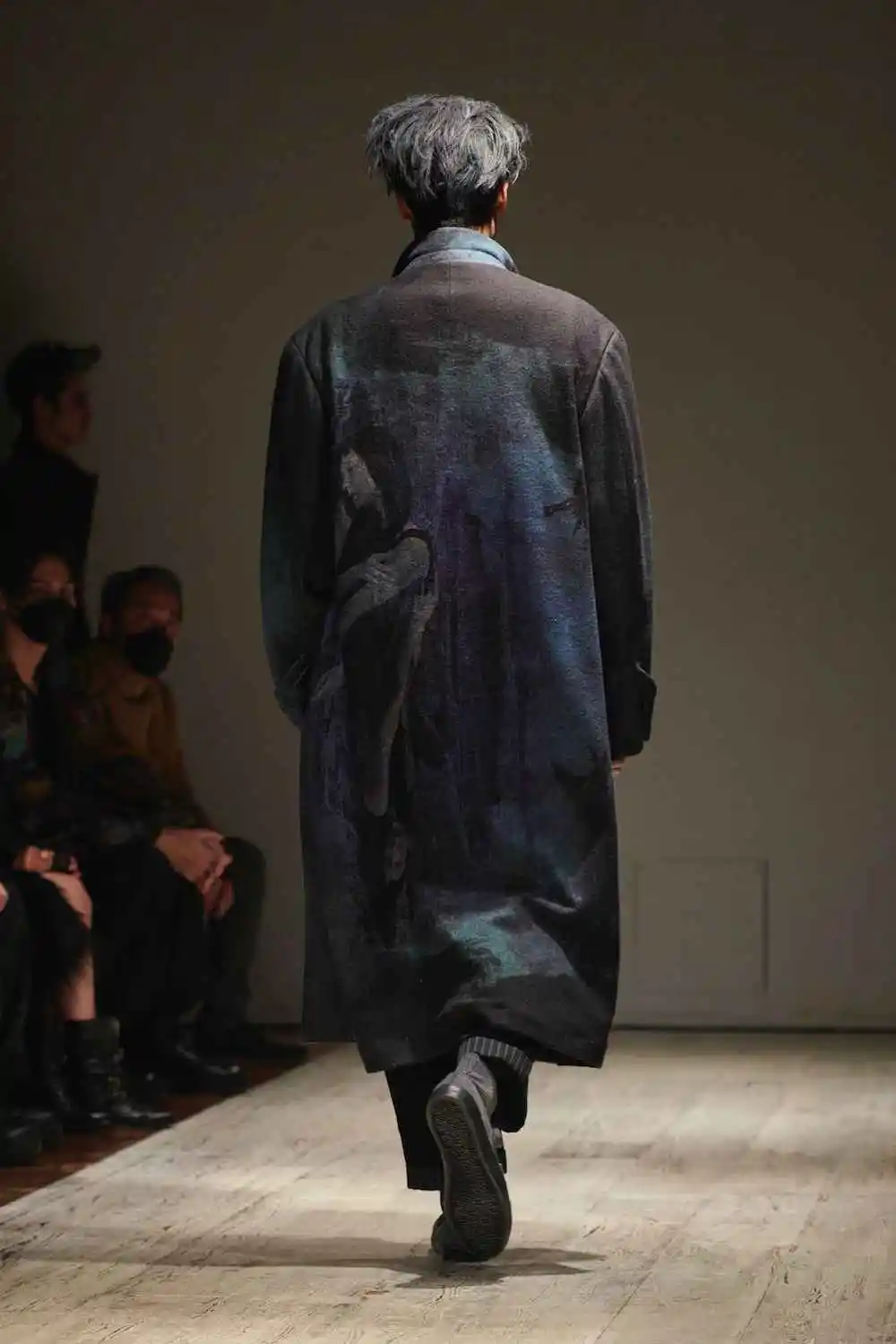
How to Care for Your Layers and Cashmere Overcoat
Proper care extends the life of your quality garments and maintains their performance as part of your layering system:
Storage: Hang your cashmere overcoat on a sturdy, broad-shouldered wooden hanger to maintain its shape. Allow space between garments for air circulation.
Cleaning frequency: Base layers should be washed after each wear, while mid-layers like sweaters can often go multiple wears between cleaning. Overcoats typically need cleaning only 1-2 times per season.
Appropriate cleaning methods:
- Merino and cashmere: Hand wash with gentle detergent or dry clean
- Dress shirts: Machine wash on gentle or professional launder
- Technical fabrics: Follow manufacturer instructions precisely
Overcoats: Professional dry cleaning only
Perspiration management: Wearing appropriate base layers helps protect more expensive mid-layers and your overcoat from perspiration damage.
Between-wear care: Allow all garments to air out for 24 hours after wearing before storing. Brush your overcoat with a clothing brush to remove surface debris.
Seasonal transition: Before storing for off-season, ensure all layers are thoroughly clean and completely dry to prevent moth damage or mildew.
Understanding the warming properties of different materials, like those discussed in our guide about wool coats in winter, helps you make informed care decisions that preserve your garments’ insulating qualities.
Expert Tips: Advanced Layering Techniques
Take your layering mastery to the next level with these sophisticated approaches:
Color Theory Application
Create depth through tonal layering—variations within the same color family (navy, slate blue, and light blue) create visual interest while maintaining sophistication. Alternatively, use complementary colors on the color wheel for subtle contrast that enhances rather than overwhelms.
Artful Pattern Mixing
When incorporating patterns, follow the scale principle—pair small-scale patterns (fine herringbone) with larger ones (subtle windowpane check) while keeping one significantly more prominent than the other.
Texture Conversation
Create visual interest through contrasting textures—smooth cashmere against nubby tweed or matte merino against subtle sheen of a fine cotton shirt—while maintaining color harmony.
Weather Adaptation
For unpredictable conditions, incorporate a lightweight, packable gilet (vest) as an adjustable mid-layer that can be easily added or removed without affecting your overall silhouette.
Modern Proportions
Update traditional layering by adjusting proportions slightly—a slightly shorter overcoat paired with a contemporary-cut suit creates a modern silhouette while maintaining classic elegance.
Movement Optimization
Select garments with natural stretch or strategic construction (side pleats, back vents) to maintain full range of motion despite multiple layers.
These advanced techniques build upon fundamental principles while allowing you to develop a personalized approach to layering under your cashmere overcoat. Exploring different cashmere overcoat styles helps you select the perfect outer layer for your refined layering system.



